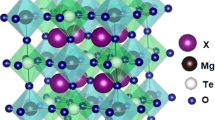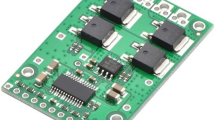Abstract
Langasite (La3Ga5SiO14, LGS) and gallium orthophosphate (GaPO4) resonators exhibit piezoelectrically exited bulk acoustic waves at temperatures of up to at least 1400∘C and 900∘C, respectively. Their mass sensitivity at elevated temperatures has been found to be about as high as that of quartz at room temperature. Within its operation temperature range, GaPO4 shows significantly lower losses than LGS.
Factors restricting application relevant properties of LGS at elevated temperatures, such as the mass resolution, include excessive viscous damping. Therefore, the effective viscosity is determined as a function of the temperature by fitting the calculated complex impedance to the experimental data in the vicinity of the resonance frequency. The viscosity shows an Arrhenius-like behavior if a temperature independent contribution is subtracted. The activation energies of the viscosity for LGS and GaPO4 correspond to those of the bulk electrical conductivity for each material. Viscosity and conductivity are obviously correlated. Therefore, it is highly likely that the predominant conductivity mechanism also controls the mechanical damping. First attempts to minimize the viscosity of LGS by doping are undertaken. Very light doping does, however, not change the conductivity and viscosity of LGS. Higher doping levels have to be applied and tested.
Based on the electromechanical properties given for undoped LGS, the applicability of this material as resonant gas sensor at 600∘C is demonstrated.
Similar content being viewed by others
References
R.W. Cernosek, J.R. Bigbie, M.T. Anderson, J.H. Small, and P.S. Sawyer, Solid-State Sensor and Actuator Workshop, Hilton Head Island, South Carolina, 8.-11.6.1998.
K. Shimamura, H. Takeda, T. Kohno, and T. Fukuda, J. Crystal Growth, 163, 388 (1996).
B. Chai, J.L. Lefaucheur, Y.Y. Ji, and H. Qiu, IEEE Int. Freq. Contr. Symp. 748 (1998).
K. Jacobs, P. Hofmann, D. Klimm, J. Reichow, and M. Schneider, J. Solid State Chem., 149, 180 (2000).
S. Ganschow, C. Cavalloni, P. Reiche, and R. Uecker, Proc. SPIE, 2373, 55 (1995).
C. Reiter, P.W. Krempl, H. Thanner, W. Wallnöfer, and P.M. Worsch, Ann. Chim. Sci. Mat., 26, 91 (2001).
H. Fritze and H.L. Tuller, Appl. Phys. Lett., 78, 976 (2001).
J. Sauerwald, H. Fritze, E. Ansorge, S. Schimpf, S. Hirsch, and B. Schmidt, International Workshop on Integrated Electroceramic Functional Structures, Berchtesgaden, Germany, 6.-8.6.2005.
C. Behling, Ph.D. Thesis, Otto-von-Guericke Universität Magdeburg, Germany (1999).
H. Fritze, O. Schneider, and G. Borchardt, Sensor 2003, Nürnberg, Germany, 13.-15.5.2003 (Proceedings, AMA Service GmbH) (2003).
R. Lucklum, C. Behling, R.W. Cernosek, and S.J. Martin, J. Phys. D: Appl. Phys., 30, 346 (1997).
H. Fritze, O. Schneider, H. Seh, H.L. Tuller, and G. Borchardt, Phys. Chem. Chem. Phys., 5, 5207 (2003).
W. Göpel, J. Hesse, J.N. Zehmel, Sensors, A Comprehensive Survey, Vol. 7 (VCH Weinheim, 1994), p. 211.
H. Seh, Ph. D. Thesis (MIT, 2005).
H. Seh, H. Tuller, and H. Fritze, J. Europ. Ceram. Soc., 24, 1425 (2004).
H. Fritze, D. Richter, and H.L. Tuller, Sensors Actuators, B 111–112, 200 (2005).
Author information
Authors and Affiliations
Corresponding author
Rights and permissions
About this article
Cite this article
Fritze, H. High temperature piezoelectric materials: Defect chemistry and electro-mechanical properties. J Electroceram 17, 625–630 (2006). https://doi.org/10.1007/s10832-006-9735-1
Received:
Revised:
Accepted:
Issue Date:
DOI: https://doi.org/10.1007/s10832-006-9735-1




